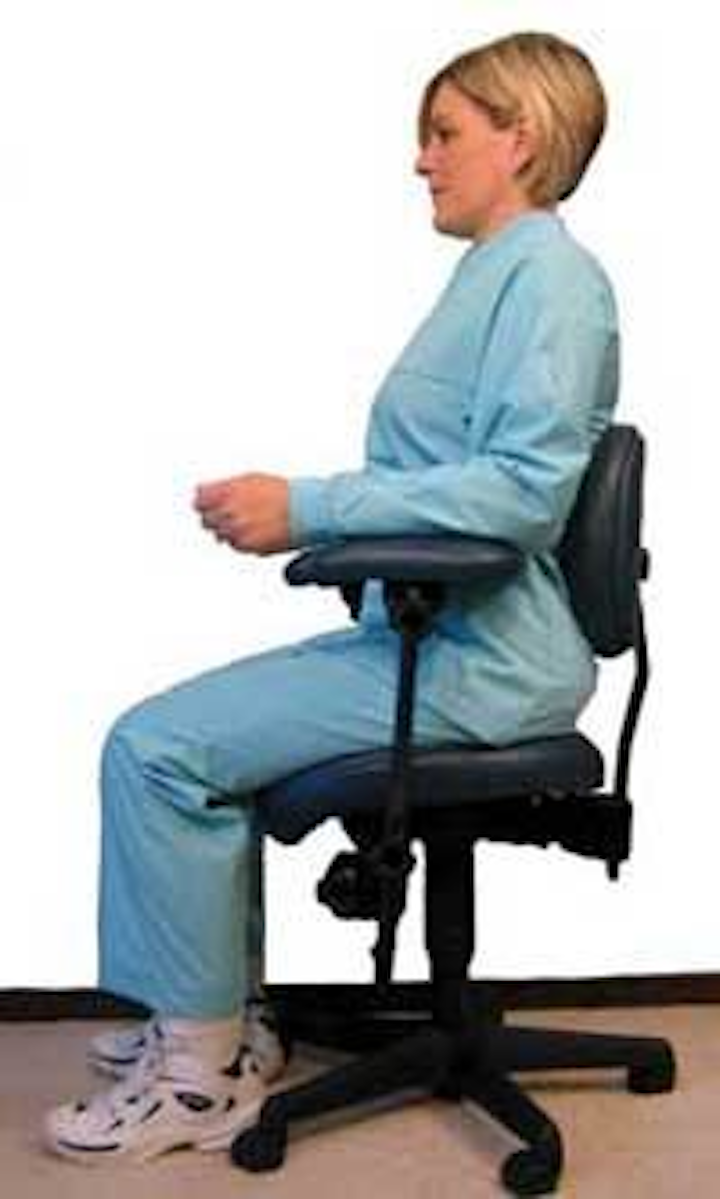Most of us were taught to sit with our thighs parallel to the floor a dangerous posture that flattens out the natural curve of the lower back.
Dental chair thigh parallel to the floor.
An operator chair that supports the dental hygienist and is properly adjusted helps maintain the desired low back curve.
Thighs parallel to floor or knees slightly lower than hips feet kept flat on the floor and not crossed backrest of chair positioned to support lower portion or small of the back height of chair maintained to keep operator s forearms parallel to the floor when bent at the elbow.
This forward position causes.
Thighs parallel to the floor or knees slightly lower than the hips feet flat on the floor backrest of the chair positioned to support the lower portion or small of the back operator s forearms bent at the elbow and parallel to the floor.
This postition is different for every operator.
Sitting in a traditional seat with the thighs parallel to the floor flattens the lumbar spine creating undue stress on the entire musculoskeletal system.
2 thighs parallel to the floor 3 feet flat on the floor 4 back rest of chair positioned to support lower portion or small of the back 5 height of chair adjusted to keep operators forearms parallel to the floor.
Most dental offices have chairs with flat seat pans.
The focus however is usually on matching fabrics and colors rather than on the safety and comfort of the clinician who sits on the.
Typically clinician chairs were and still are a part of the package anytime an office orders new patient chairs.
The height of the chair is low enough for the heels of the feet to rest on the floor.
This type of chair requires the thighs to be parallel to the floor with the hip angle at 90 degrees.
Thighs parallel to the floor feet flat on the floor with the chair positioned to support the lower back.
Actually not just saddle but any seating option that allows the user to maintain an s curve in the lumbar region.
Most seat pans are designed so the user s thighs stay parallel to the floor.
This paradigm for seated work has been widely accepted for generations and may be due in part to the design of early operator chairs which featured a flat nonadjustable seat design.
Feet on the foot ring of the stool as close as possible to the dental chair legs parallel to the patients chair 4 6 inches above operators eye level.
Movement of fingers and wrist.
For years clinicians sat on whatever kind of chair or stool the dental practice supplied.
Positioning the dental assistant.










